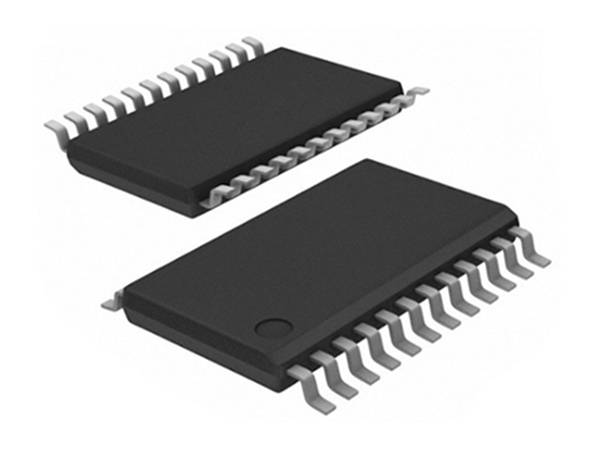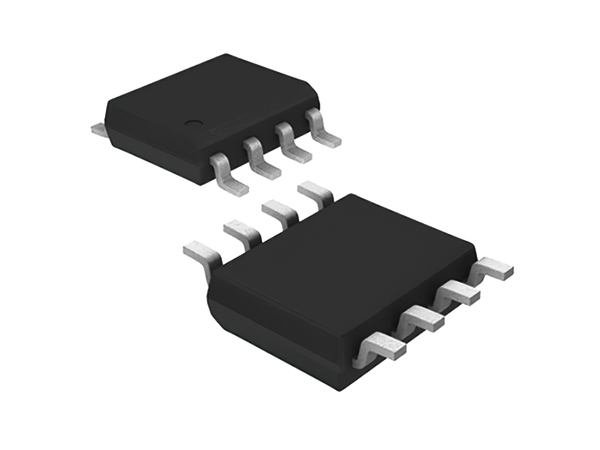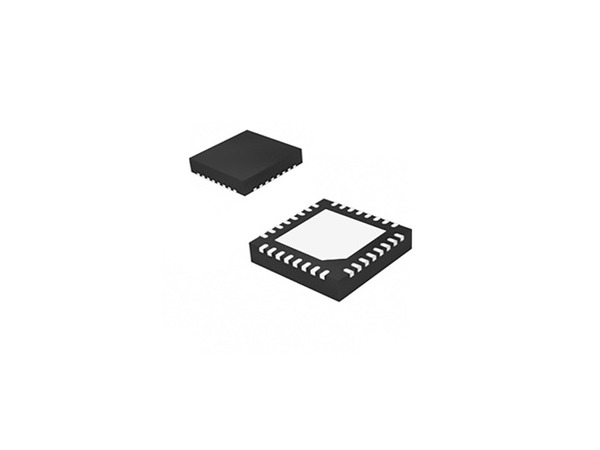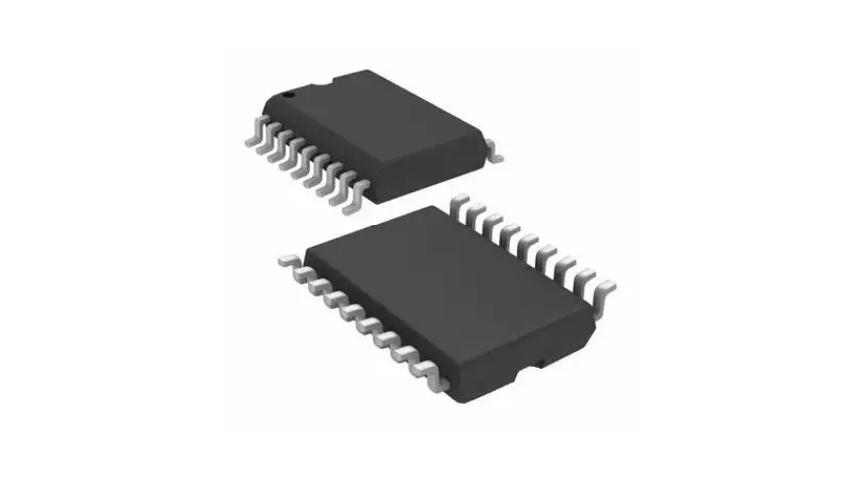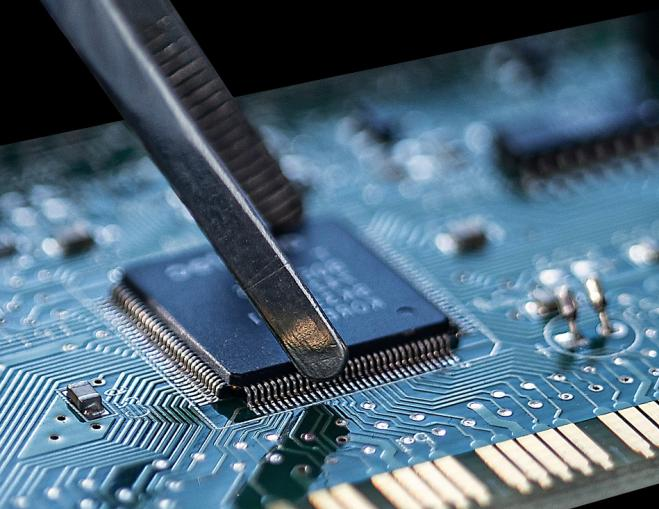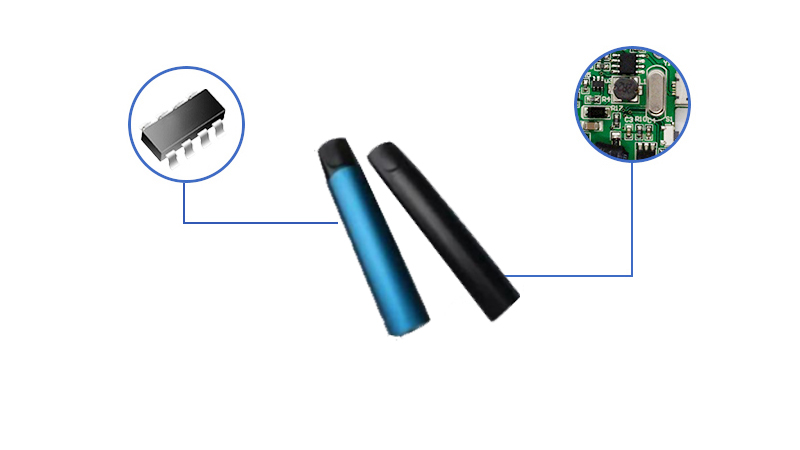Core
■ 32-bit Arm® Cortex®-M0+ processor core
■ Up to 40MHz operating frequency for HT32F52231/52241 or 48MHz for HT32F52331/52341
■ 0.93 DMIPS/MHz (Dhrystone v2.1)
■ Single-cycle multiplication
■ Integrated Nested Vectored Interrupt Controller (NVIC)
■ 24-bit SysTick timer The Cortex®-M0+ processor is a very low gate count, highly energy efficient processor that is intended for microcontroller and deeply embedded applications that require an area optimized, low-power processor.
The processor is based on the ARMv6-M architecture and supports Thumb® instruction sets; single-cycle I/O port; hardware multiplier and low latency interrupt respond time.
On-chip Memory
■ Up to 64 KB on-chip Flash memory for instruction/data and options storage
■ 8 KB on-chip SRAM
■ Supports multiple boot modes
The Arm® Cortex®-M0+ processor accesses and debug accesses share the single external interface to external AHB peripheral. The processor accesses take priority over debug accesses. The maximum address range of the Cortex®-M0+ is 4 GB since it has a 32-bit bus address width. Additionally, a pre-defined memory map is provided by the Cortex™-M0+ processor to reduce the software complexity of repeated implementation by different device vendors. However, some regions are used by the Arm® Cortex®-M0+ system peripherals. Refer to the Arm® Cortex®-M0+ Technical Reference Manual for more information. Figure 2 shows the memory map of the HT32F52231/52241 and HT32F52331/52341 series of devices, including code, SRAM, peripheral, and other pre-defined regions
Flash Memory Controller – FMC
■ Flash accelerator for maximum efficiency
■ 32-bit word programming with In System Programming Interface (ISP) and In Application Programming (IAP)
■ Flash protection capability to prevent illegal access
The Flash Memory Controller, FMC, provides all the necessary functions and pre-fetch buffer for the embedded on-chip Flash Memory. Since the access speed of the Flash Memory is slowerthan the CPU, a wide access interface with a pre-fetch buffer and cache are provided for the Flash Memory in order to reduce the CPU waiting time which will cause CPU instruction execution delays. Flash Memory word program/page erase functions are also provided.
Reset Control Unit – RSTCU
■ Supply supervisor:
● Power On Reset / Power Down Reset – POR/PDR
● Brown-out Detector – BOD
● Programmable Low Voltage Detector – LVD The Reset Control Unit, RSTCU, has three kinds of reset, a power on reset, a system reset and an APB unit reset. The power on reset, known as a cold reset, resets the full system during power up. A system reset resets the processor core and peripheral IP components with the exception of the SW-DP controller. The resets can be triggered by an external signal, internal events and the reset generators.
Clock Control Unit – CKCU
■ External 4 to 16MHz crystal oscillator
■ External 32,768 Hz crystal oscillator
■ Internal 8MHz RC oscillator trimmed to ±2 % accuracy at 3.3V operating voltage and 25°C operating temperature
■ Internal 32 kHz RC oscillator
■ Integrated system clock PLL
■ Independent clock divider and gating bits for peripheral clock sources
The Clock Control unit, CKCU, provides a range of oscillator and clock functions. These include a High Speed Internal RC oscillator (HSI), a High Speed External crystal oscillator (HSE), a Low Speed Internal RC oscillator (LSI), a Low Speed External crystal oscillator (LSE), a Phase Lock Loop (PLL), a HSE clock monitor, clock prescalers, clock multiplexers, APB clock divider and gating circuitry. The AHB, APB and Cortex®-M0+ clocks are derived from the system clock (CK_SYS) which can come from the HSI, HSE or PLL. The Watchdog Timer and Real Time Clock (RTC) use either the LSI or LSE as their clock source.
Power Management – PWRCU
■ Single VDD power supply: 2.0V to 3.6V
■ Integrated 1.5V LDO regulator for MCU core power, peripherals and memories power supply
■ VDD power supply for RTC.
■ Two power domains: VDD, VCORE
■ Four power saving modes: Sleep, Deep-Sleep1, Deep-Sleep2, Power-Down Power consumption can be regarded as one of the most important issues for many embedded system applications. Accordingly the Power Control Unit, PWRCU, in these devices provides many types of power saving modes such as Sleep, Deep-Sleep1, Deep-Sleep2 and Power-Down mode. These operating modes reduce the power consumption and allow the application to achieve the best trade-off between the conflicting demands of MCU operating time, speed and power consumption.
External Interrupt/Event Controller – EXTI
■ Up to 16 EXTI lines with configurable trigger source and type
■ All GPIO pins can be selected as EXTI trigger source
■ Source trigger type includes high level, low level, negative edge, positive edge, or both edge
■ Individual interrupt enable, wakeup enable and status bits for each EXTI line
■ Software interrupt trigger mode for each EXTI line
■ Integrated deglitch filter for short pulse blocking The External Interrupt/Event Controller, EXTI, comprises 16 edge detectors which can generate a wake-up event or interrupt requests independently. Each EXTI line can also be masked independently
Analog to Digital Converter – ADC
■ 12-bit SAR ADC engine
■ Up to 1 Msps conversion rate
■ Up to 12 external analog input channels
A 12-bit multi-channel ADC is integrated in the device. There are multiplexed channels, which include 12 external analog signal channels and 2 internal channels which can be measured. If the input voltage is required to remain within a specific threshold window, an Analog Watchdog function will monitor and detect these signals. An interrupt will then be generated to inform the device that the input voltage is not within the preset threshold levels. There are three conversion modes to convert an analog signal to digital data. The ADC can be operated in one shot, continuous and discontinuous conversion modes.
I/O Ports – GPIO
■ Up to 40 GPIOs
■ Port A, B, C are mapped as 16 external interrupts – EXTI
■ Almost all I/O pins have a configurable output driving current.
There are up to 40 General Purpose I/O pins, GPIO, named from PA0 ~ PA15 to PC0 ~ PC7 for the implementation of logic input/output functions. Each of the GPIO ports has a series of related control and configuration registers to maximize flexibility and to meet the requirements of a wide range of applications. The GPIO ports are pin-shared with other alternative functions to obtain maximum functional flexibility on the package pins. The GPIO pins can be used as alternative functional pins by configuring the corresponding registers regardless of the input or output pins. The external interrupts on the GPIO pins of the device have related control and configuration registers in the External Interrupt Control Unit, EXTI.
Motor Control Timer – MCTM
■ 16-bit up/down auto-reload counter
■ 16-bit programmable prescaler allowing counter clock frequency division by any factor between 1 and 65536
■ Input Capture function
■ Compare Match Output
■ PWM waveform generation with Edge-aligned and Center-aligned Counting Modes
■ Single Pulse Mode Output
■ Complementary Outputs with programmable dead-time insertion
■ Supports 3-phase motor control and hall sensor interface
■ Break input to force the timer's output signals into a reset or fixed condition
The Motor Control Timer consists of a single 16-bit up/down counter, four 16-bit CCRs (Capture / Compare Registers), single one 16-bit counter-reload register (CRR), single 8-bit repetition counter and several control / status registers. It can be used for a variety of purposes including measuring the pulse widths of input signals or generating output waveforms such as compare match outputs, PWM outputs or complementary PWM outputs with dead-time insertion. The MCTM is capable of offering full functional support for motor control, hall sensor interfacing and brake input.
General-Purpose Timer – GPTM
■ 16-bit up/down auto-reload counter
■ 16-bit programmable prescaler allowing counter clock frequency division by any factor between 1 and 65536
■ Input Capture function
■ Compare Match Output
■ PWM waveform generation with Edge-aligned and Center-aligned Counting Modes
■ Single Pulse Mode Output
■ Encoder interface controller with two inputs using quadrature decoder
The General-Purpose Timer consists of one 16-bit up / down-counter, four 16-bit Capture / Compare Registers (CCRs), one 16-bit Counter Reload Register (CRR) and several control/status registers. They can be used for a variety of purposes including general time measurement, input signal pulse width measurement, output waveform generation such as single pulse generation, or PWM output generation. The GPTM supports an Encoder Interface using a decoder with two inputs.
Single Channel Timer – SCTM
■ 16-bit up and auto-reload counter
■ One channel for each timer
■ 16-bit programmable prescaler allowing counter clock frequency division by any factor between 1 and 65536
■ Input Capture function
■ Compare Match Output
■ PWM waveform generation with Edge-aligned
■ Single Pulse Mode Output
The Single-Channel Timer consists of one 16-bit up-counter, one 16-bit Capture/Compare Register (CCR), one 16-bit Counter-Reload Register (CRR) and several control/status registers. It can be used for a variety of purposes including general timer, input signal pulse width measurement or output waveform generation such as single pulse generation or PWM output.
Basic Function Timer – BFTM
■ 32-bit compare/match count-up counter - no I/O control features
■ One shot mode - counting stops after a match condition
■ Repetitive mode - restart counter after a match condition
The Basic Function Timer is a simple count-up 32-bit counter designed to measure time intervals and generate a one shot or repetitive interrupts. The BFTM operates in two functional modes, repetitive or one shot mode. In the repetitive mode the BFTM restarts the counter when a compare match event occurs. The BFTM also supports a one shot mode which forces the counter to stop counting when a compare match event occurs.
Watchdog Timer – WDT
■ 12-bit down counter with 3-bit prescaler
■ Reset event for the system
■ Programmable watchdog timer window function
■ Register write protection function
The Watchdog Timer is a hardware timing circuit that can be used to detect system failures due to software malfunctions. It includes a 12-bit count-down counter, a prescaler, a WDT delta value register, WDT operation control circuitry and a WDT protection mechanism. If the software does not reload the counter value before a Watchdog Timer underflow occurs, a reset will be generated when the counter underflows. In addition, a reset is also generated if the software reloads the counter when the counter value is greater than the WDT delta value. This means the counter must be reloaded within a limited timing window using a specific method. The Watchdog Timer counter can be stopped while the processor is in the debug mode. There is a register write protect function which can be enabled to prevent it from changing the Watchdog Timer configuration unexpectedly
Real Time Clock – RTC
■ 24-bit up-counter with a programmable prescaler
■ Alarm function
■ Interrupt and Wake-up event
The Real Time Clock, RTC, includes an APB interface, a 24-bit count-up counter, a control register, a prescaler, a compare register and a status register. Most of the RTC circuits are located in the Backup Domain except for the APB interface. The APB interface is located in the VCORE power domain. Therefore, it is necessary to be isolated from the ISO signal that comes from the power control unit when the VCORE power domain is powered off, that is when the device enters the PowerDown mode. The RTC counter is used as a wakeup timer to generate a system resume signal from the Power-Down mode.
Inter-integrated Circuit – I2 C
■ Supports both master and slave modes with a frequency of up to 1 MHz
■ Provide an arbitration function and clock synchronization
■ Supports 7-bit and 10-bit addressing modes and general call addressing
■ Supports slave multi-addressing mode with maskable address
The I2 C is an internal circuit allowing communication with an external I2 C interface which is an industry standard two line serial interface used for connection to external hardware. These two serial lines are known as a serial data line, SDA, and a serial clock line, SCL. The I2 C module provides three data transfer rates: (1) 100kHz in the Standard mode, (2) 400kHz in the Fast mode and (3) 1MHz in the Fast plus mode. The SCL period generation register is used to setup different kinds of duty cycle implementations for the SCL pulse. The SDA line which is connected directly to the I2 C bus is a bi-directional data line between the master and slave devices and is used for data transmission and reception. The I2 C also has an arbitration detect function and clock synchronization to prevent situations where more than one master attempts to transmit data to the I2 C bus at the same time.
Serial Peripheral Interface – SPI
■ Supports both master and slave mode
■ Frequency of up to (fPCLK/2)MHz for the master mode and (fPCLK/3) MHz for the slave mode
■ FIFO Depth: 8 levels
■ Multi-master and multi-slave operation
The Serial Peripheral Interface, SPI, provides an SPI protocol data transmit and receive function in both master and slave mode. The SPI interface uses 4 pins, which are the serial data input and output lines MISO and MOSI, the clock line, SCK, and the slave select line, SEL. One SPI device acts as a master device which controls the data flow using the SEL and SCK signals to indicate the start of data communication and the data sampling rate. To receive a data byte, the streamed data bits are latched on a specific clock edge and stored in the data register or in the RX FIFO. Data transmission is carried out in a similar way but in a reverse sequence. The mode fault detection provides a capability for multi-master applications.
Universal Synchronous Asynchronous Receiver Transmitter – USART
■ Supports both asynchronous and clocked synchronous serial communication modes
■ Asynchronous operating baud rate up to (fPCLK/16)MHz and synchronous operating rate up to (fPCLK/8)MHz
■ Full duplex communication
■ Fully programmable serial communication characteristics including:
● Word length: 7, 8, or 9-bit character
● Parity: Even, odd, or no-parity bit generation and detection
● Stop bit: 1 or 2 stop bit generation
● Bit order: LSB-first or MSB-first transfer
■ Error detection: Parity, overrun, and frame error
■ Auto hardware flow control mode – RTS, CTS
■ IrDA SIR encoder and decoder
■ RS485 mode with output enable control
■ FIFO Depth: 8-level for both receiver and transmitter
The Universal Synchronous Asynchronous Receiver Transceiver, USART, provides a flexible full duplex data exchange using synchronous or asynchronous data transfer. The USART is used to translate data between parallel and serial interfaces, and is commonly used for RS232 standard communication. The USART peripheral function supports four types of interrupt including Line Status Interrupt, Transmitter FIFO Empty Interrupt, Receiver Threshold Level Reaching Interrupt and Time Out Interrupt. The USART module includes an 8-level transmitter FIFO, (TX_FIFO) and an 8-level receiver FIFO (RX_FIFO). The software can detect a USART error status by reading the Line Status Register, LSR. The status includes the type and the condition of transfer operations as well as several error conditions resulting from Parity, Overrun, Framing and Break events.
Universal Asynchronous Receiver Transmitter – UART
Asynchronous serial communication operating baud-rate up to fPCLK/16MHz
■ Full duplex communication
■ Fully programmable serial communication characteristics including:
● Word length: 7, 8, or 9-bit character
● Parity: Even, odd, or no-parity bit generation and detection
● Stop bit: 1 or 2 stop bit generation
● Bit order: LSB-first or MSB-first transfer
■ Error detection: Parity, overrun, and frame error
The Universal Asynchronous Receiver Transceiver, UART, provides a flexible full duplex data exchange using asynchronous transfer. The UART is used to translate data between parallel and serial interfaces, and is commonly used for RS232 standard communication. The UART peripheral function supports Line Status Interrupt. The software can detect a UART error status by reading the Line Status Register, LSR. The status includes the type and the condition of transfer operations as well as several error conditions resulting from Parity, Overrun, Framing and Break events.
Smart Card Interface – SCI (HT32F52331/52341 only)
Supports ISO 7816-3 standard
■ Character mode
■ Single transmit buffer and single receive buffer
■ 11-bit ETU (elementary time unit) counter
■ 9-bit guard time counter
■ 24-bit general purpose waiting time counter
■ Parity generation and checking
■ Automatic character retry on parity error detection in transmission and reception modes
The Smart Card Interface is compatible with the ISO 7816-3 standard. This interface includes Card Insertion/Removal detection, SCI data transfer control logic and data buffers, internal Timer Counters and corresponding control logic circuits to perform all the necessary Smart Card operations. The Smart Card interface acts as a Smart Card Reader to facilitate communication with the external Smart Card. The overall functions of the Smart Card interface are controlled by a series of registers including control and status registers together with several corresponding interrupts which are generated to get the attention of the microcontroller for SCI transfer status.
Cyclic Redundancy Check – CRC
■ Support CRC16 polynomial: 0x8005, X16+X15+X2+1
■ Support CCITT CRC16 polynomial: 0x1021, X16+X12+X5+1
■ Support IEEE-802.3 CRC32 polynomial: 0x04C11DB7, X32+X26+X23+X22+X16+X12+X11+X10+X8+X7+X5+X4+X2+X+1
■ Supports 1's complement, byte reverse & bit reverse operation on data and checksum
■ Supports byte, half-word & word data size
■ Programmable CRC initial seed value
■ CRC computation executed in 1 AHB clock cycle for 8-bit data and 4 AHB clock cycles for 32-bit data
The CRC calculation unit is an error detection technique test algorithm which is used to verify data transmission or storage data correctness. A CRC calculation takes a data stream or a block of data as its input and generates a 16- or 32-bit output remainder. Ordinarily, a data stream is suffixed by a CRC code and used as a checksum when being sent or stored. Therefore, the received or restored data stream is calculated by the same generator polynomial as described above. If the new CRC code result does not match the one calculated earlier, then this means that the data stream contains a data error.
Universal Serial Bus Device Controller – USB (HT32F52331/52341 only)
Complies with USB 2.0 full-speed (12 Mbps) specification
■ On-chip USB full-speed transceiver
■ 1 control endpoint (EP0) for control transfer
■ 3 single-buffered endpoints for bulk and interrupt transfer
■ 4 double-buffered endpoints for bulk, interrupt and isochronous transfer
■ 1,024 bytes EP-SRAM used as the endpoint data buffers
The USB device controller is compliant with the USB 2.0 full-speed specification. There is one control endpoint known as Endpoint 0 and seven configurable endpoints. A 1024-byte SRAM is used as the endpoint buffer. Each endpoint buffer size is programmable using corresponding registers, which provides maximum flexibility for various applications. The integrated USB fullspeed transceiver helps to minimize the overall system complexity and cost. The USB functional block also contains the resume and suspend feature to meet the requirements of low-power consumption.
Debug Support
■ Serial Wire Debug Port – SW-DP
■ 4 comparators for hardware breakpoint or code / literal patch
■ 2 comparators for hardware watchpoints
Package and Operation Temperature
■ 24/28-pin SSOP, 33-pin QFN, 48-pin LQFP for HT32F52231/52241
■ 33-pin QFN, 48-pin LQFP package for HT32F52331/52341
■ Operation temperature range: -40°C to +85°C



 MCU Solutions
MCU Solutions PCBA Solutions
PCBA Solutions
 FAQ
FAQ Contact Us
Contact Us
 Company News
Company News MCU News
MCU News PCBA News
PCBA News
 Company Profile
Company Profile Certificates
Certificates Terms & Conditions
Terms & Conditions Privacy Statement
Privacy Statement





